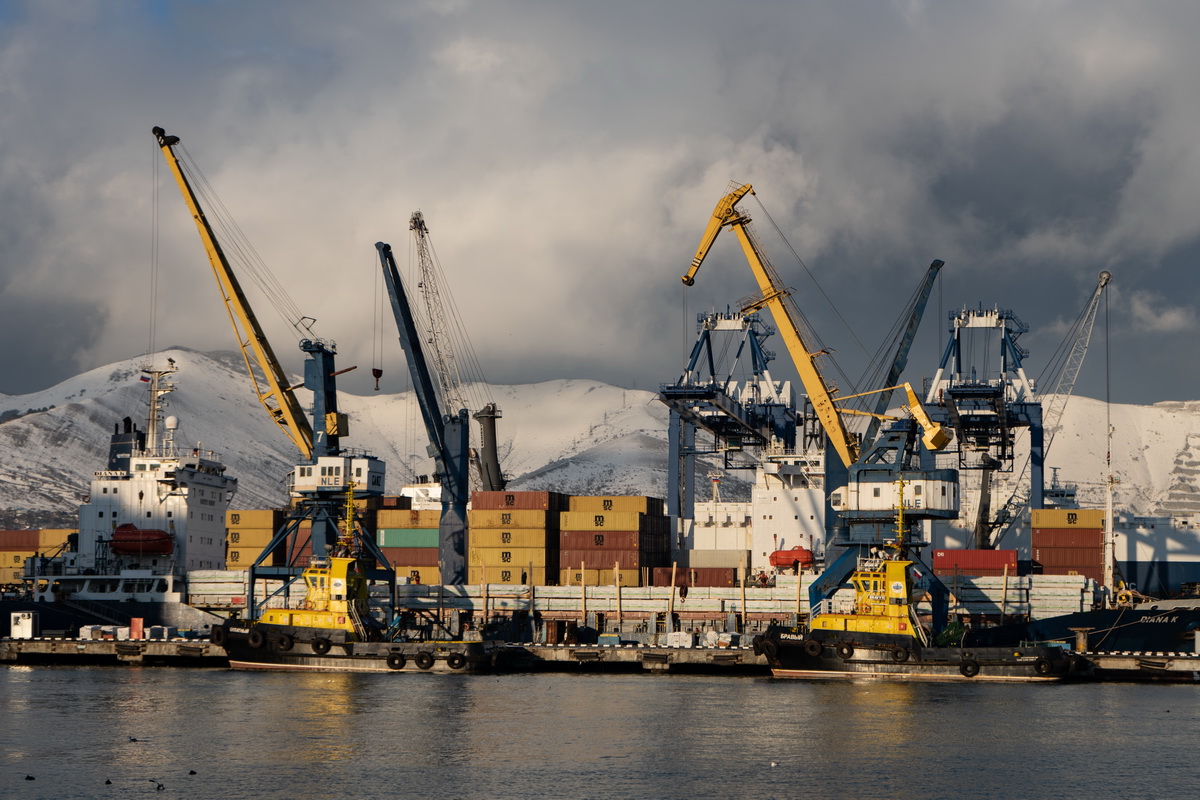Handling of dry bulk cargo contributed to overall growth with an 18.2-percent gain in the segment

The total volume growth was due to a strong increase (+18.2%) in the segment of dry bulk cargo. This was primarily grain, mineral and chemical fertilizers, coal and coke, which reached 224.7 million tonnes. Handling of liquid bulk cargo across the country’s seaports increased by 3.9% to 228.6 million tonnes.
The Arctic basin ports showed a 2.0% gain to 49.5 million tonnes of different cargo, with a 17.2-percent growth in dry bulk cargo (14.9 million tonnes) contributing to the overall increase. Liquid bulk volume in the basin on the contrary declined 3.3% to 34.6 million tonnes.
Cargo throughput at Baltic Sea basin ports increased by 5.2% to 129.8 million tonnes. At the same time, the volume of dry bulk cargo handled at the seaports was up 17.2% year-on-year to 57 million tonnes, while liquid bulk cargo fell 2.6% to 72.8 million tonnes.
The Azov-Black Sea basin ports performed strongly, increasing its volume by 21.2% reaching 151.2 million tonnes. Handling of dry bulk cargo at the ports rose 33.1% to 71.8 million tonnes, liquid bulk cargo volume was up 12.1% to 79.4 million tonnes.
Cargo volume at the seaports of the Caspian basin, which is a transit for the "North-South" international transport corridor, surged by 38.0% to 3.6 million tonnes. The volume of dry bulk cargo in the basin ports increased by 1.8 times to 2.1 million tonnes, and handling of liquid bulk cargo was up increased by 3% and amounted to 1.5 million tonnes.
Throughput of the seaports of the Far East basin increased by 7.5% reaching 119.2 million tonnes. Dry bulk segment showed a 7.2-percent growth to 78.9 million tonnes, liquid bulk cargo volume increased by 8% to 40.3 million tonnes.
Rosmorrechflot participates in two federal projects included in the Comprehensive Plan for the Modernization and Expansion of the Main Infrastructure: as its administrator in the Development of Seaports project, and as a co-contractor in partnership with Rosatom State Corporation in the Development of the Northern Sea Route project.
The key result of the implementation of the federal project "Development of Seaports" is the systematic increase in their capabilities, which reached 1.3 billion tonnes by mid-2023. This figure is more than double the capacity of all seaports in the USSR in 1990 (600 million tonnes) and more than four times more than the combined capacity of Russian seaports in 2000 (about 300 million tonnes). In 2022 alone, the increase in the handling capacity of domestic seaports exceeded 36 million tonnes, mainly due to the commissioning of new terminals in Primorye, Kamchatka and Taman.



